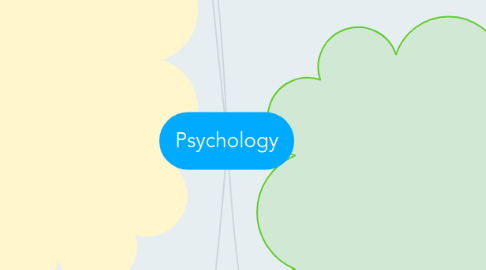
1. Hierarchy of Needs
1.1. Abraham Maslow's theory of psychological fulfillment
1.1.1. Usually represented as a pyramid
1.2. Starts with physical needs (food, water, sleep, etc), then works up to self-actualization (becoming the best version of oneself possible; reaching total satisfaction)
1.3. The second-lowest level is safety, which includes physical shelter, good health, and secure employment
1.4. After safety comes love/belonging, which includes familial love, friendship, and romantic/sexual love
1.5. The fourth rung is esteem, which includes self-esteem, esteem in the eyes of others, achievement, and mutual respect; immediately after this is the apex, self-actualization
1.5.1. Self-actualization includes the need for creativity, problem solving, initiative, and lack of bias
2. Psychosexual Development
2.1. Sigmund Freud's theory of childhood psychological development as linked to areas of sexual stimulation in the body, centred around conflicts inherent to each stage
2.2. Starts with the oral stage, from birth to about one year of age
2.2.1. The child will enjoy oral stimulation, which involves putting things in their mouth and sucking on or chewing them. This may be related to teething, which generally occurs during this phase
2.2.2. The conflict in this stage is not clear as the child does not recognize themselves as being able to come into conflict with the outside world until the next phase
2.3. The second stage is the anal stage, from one to three years old
2.3.1. The child derives joy from defecating, including during potty training. The ego is supposed to develop in this stage
2.3.2. The conflict in this stage stems from the greater number of rules added by adults during potty training
2.4. The third stage is phallic, from three to about five or six years old
2.4.1. This stage contains the development of the Oedipus complex or Electra complex, where children experience some form of sexual attraction to the parent of the opposite sex
2.4.2. There is conflict in coming to the realization that there is an anatomical difference between the sexes
2.5. The fourth stage is the latency stage, from the end of the previous stage to puberty
2.5.1. No further development is taking place during this period, as its name would imply
2.5.2. Focus starts going into school work, learning skills, and friendship with groups largely of the same sex
2.6. The fifth and final stage is the genital stage, from puberty to adulthood
2.6.1. Includes sexual experimentation with the goal of a mutually loving two-person relationship in one's 20s
3. Archetypes
3.1. Mythical characters resonating with humanity's collective unconsciousness, according to Carl Gustav Jung
3.2. Jung defined four main types that equate to what, on a basic level, makes people tick
3.2.1. These types are the Shadow, the Anima/Animus duality, and the Self
3.2.1.1. The Shadow is the innermost archetype, representing what a person seldom shows outwardly and may not see themselves. In many people, it is the part that they deny or fear and wish to sever from the persona they want to adopt. Jung posited that this is what prevents most people from being "whole"
3.2.1.2. The Anima represents the feminine identity, while the Animus represents the masculine. People may have one or the other or both, and the prevalent one is the face a person shows the world around them
3.2.1.3. The Self represents the aspect that is connected to the collective unconsciousness and the universe as a whole, and the unification of all a person's parts
3.3. Jung also theorized that there are four most important factors by which types of people may process the world: sensation, inturition, feeling, and thinking
3.3.1. Katharine Cook Briggs and Isabelle Briggs Myers built on these ideas to make one of the most famous psychological questionnaires, the Myers-Briggs Type Indicator
4. Operant Conditioning
4.1. Focuses on using reinforcement and punishment to encourage or discourage behaviours
4.1.1. Reinforcement can be positive, where something desirable is given when the behaviour is performed, or negative, where something undesirable is taken away when the behaviour is performed
4.1.1.1. An example of positive reinforcement might be giving a student candy for getting all the answers right on a test, to encourage studying for future tests
4.1.1.2. An example of negative reinforcement would be getting a sunburn and therefore being encouraged to use sunblock
4.1.2. Punishment can likewise be positive or negative. In negative punishment, something desirable is taken away when the behaviour is performed, while in positive punishment, something undesirable is given when the behaviour is performed
4.1.2.1. An example of negative punishment might include taking a toy from a child who throws tantrums to discourage future tantrums
4.1.2.2. An example of positive punishment could be the giving of a traffic ticket to discourage future traffic code violations
4.2. Developed by Ivan Pavlov and B. F. Skinner, who coined the term
4.2.1. Famously, Pavlov conducted experiments on dogs to link their salivation response to a bell that would be rung when they were fed; they began reacting to the bell alone after a time
4.3. Uses a framework of stimuli and responses to make the subject have the desired reaction
4.3.1. In the example with the dogs, the experiment started out with a stimulus of food and a response of saliva. When the bell, a second stimulus, was added, the response became linked to that as well, treating it as a separate stimulus after repeated exposure to both stimuli at once.

